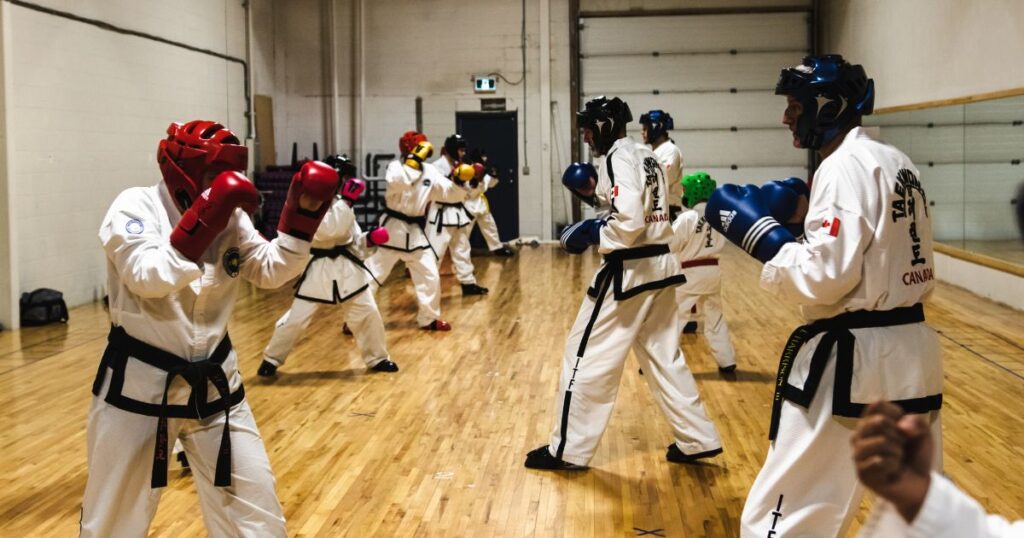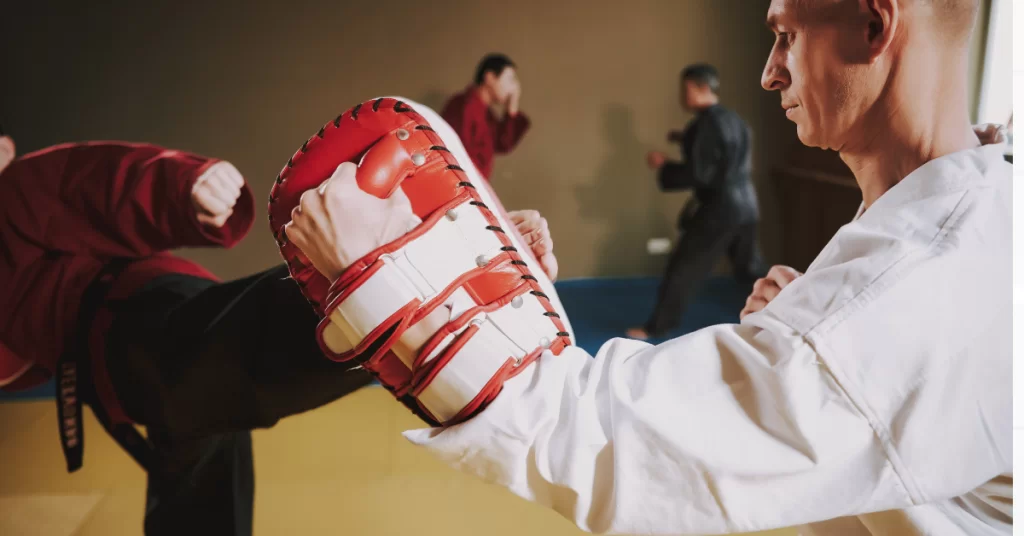Blog
“Essential Martial Arts Equipment for Training and Safety”
Martial arts training is not only about mastering techniques and movements; it’s also about ensuring safety and having the right equipment to get the most out of your practice. Whether you’re training in karate, judo, taekwondo, or mixed martial arts (MMA), having the right gear is essential for effective training and injury prevention. Here’s a guide to the essential martial arts equipment you need for training and safety.
1. Martial Arts Uniforms (Gi and Rash Guards)
A good uniform is fundamental for training as it provides comfort, flexibility, and allows instructors to see and correct your form.
Gi (Traditional Uniform): Common in karate, judo, and Brazilian jiu-jitsu (BJJ), a gi is a heavy-duty cotton uniform that typically includes a jacket, pants, and a belt. The gi should fit well—not too tight or too loose—and be durable to withstand frequent use and rigorous training.
Rash Guards: For disciplines like BJJ or MMA, rash guards are form-fitting shirts made from materials like spandex and polyester. They help keep the body warm, wick sweat, and prevent skin irritation or mat burns during training. Rash guards can be worn alone or under a gi for added comfort.
2. Protective Gear
Protective equipment is essential to keep you safe during training and sparring. It helps minimize the risk of injury and ensures that you can train with confidence.
Mouthguards: A mouthguard is vital for preventing dental injuries and protecting against concussions during sparring. Custom-fit mouthguards offer the best protection as they mold to your teeth and provide a secure fit.
Headgear: Head protection is important, especially in sports like boxing, MMA, and karate. Headgear should cover the sides of the head and provide padding to protect against impact while maintaining good visibility and comfort.
Shin Guards and Knee Pads: Essential for sports involving strikes to the legs, such as kickboxing or Muay Thai. Shin guards protect the tibia, while knee pads help prevent injury during intense drills or sparring sessions.
Gloves: The type of gloves depends on your practice. Boxing gloves are essential for striking practice, while MMA gloves, which have open fingers, allow for grappling as well as striking. Make sure the gloves fit snugly and provide adequate padding to protect your knuckles and wrists.
Elbow and Knee Guards: These are often used in BJJ and MMA training to protect the joints during grappling and ground work.

3. Training Equipment
Training equipment helps you improve your techniques, strength, and agility. It’s designed to enhance your skills and make training more productive.
Punching Bags and Heavy Bags: Ideal for practicing strikes, combinations, and power punches. A heavy bag should be the right weight for your body type and strength level. For specific training, look for bags that can be filled with different materials or are adjustable in weight.
Speed Bags: These small, hanging bags help improve hand-eye coordination, rhythm, and quickness. They’re great for boxers or martial artists focusing on speed training.
Focus Mitts and Pads: Used for training with a partner, focus mitts and pads are essential for practicing precise strikes, combinations, and reflexes. The trainer holds the pads and provides feedback on form and technique.
Double-End Bags: These are attached to the floor and ceiling, allowing them to bounce around. They help improve timing, reflexes, and accuracy, making them a staple for boxers and martial artists looking to sharpen their strikes.
Training Dummies and Grappling Dummies: For disciplines that involve grappling, such as BJJ or judo, training dummies can be used to practice throws, holds, and submissions when a training partner isn’t available.
4. Safety and Hygiene Supplies
Safety and hygiene are key to maintaining health and wellness during training.
First Aid Kit: Always have a first aid kit nearby to address minor injuries like cuts and scrapes. This should include bandages, antiseptic wipes, gauze, tape, and ice packs.
Towels and Hygiene Supplies: Keeping a towel handy helps you wipe sweat during training and maintain hygiene. Clean uniforms and gear are important to prevent skin issues like rashes or fungal infections.
Hand Sanitizer and Antibacterial Spray: Sanitation is crucial in martial arts training to prevent the spread of bacteria. Antibacterial sprays can be used to clean your equipment and mats, while hand sanitizer helps keep hands clean.
5. Essential Accessories

Belts and Sashes: In traditional martial arts, belts signify your rank and progression. Ensure that your belt is tied securely and is made from a strong material that can withstand frequent use.
Water Bottle: Staying hydrated is essential during training, so having a durable, easy-to-carry water bottle ensures you can take sips between drills and sparring sessions.
Gear Bag: A spacious and durable gear bag is essential for carrying all your equipment. Look for one with multiple compartments for organization, reinforced handles, and breathable mesh panels to keep your gear ventilated.
6. Specialized Gear for Specific Disciplines
Taekwondo: For taekwondo, look for protective gear like a chest protector, forearm guards, and foot protectors that meet the standards set by organizations like the World Taekwondo Federation.
MMA: Mixed martial artists should have MMA-specific gloves, shin guards, and a high-quality mouthguard. MMA training also requires additional gear like wrestling shoes for grappling or protective cup inserts for male athletes.
Judo: Judo practitioners often require specialized judo gis that are thicker and more durable than regular martial arts uniforms. They should also use judo-specific belts and appropriate footwear for practice.Whether you’re a beginner or an experienced martial artist, having the right gear can greatly improve your practice, provide necessary protection, and ensure you get the most out of every training session. Always choose high-quality equipment that suits your discipline and training needs to stay safe and maximize your performance.
Conclusion
Choosing the right martial arts equipment is crucial for effective training and injury prevention. Whether you’re a beginner or an experienced martial artist, having the right gear can greatly improve your practice, provide necessary protection, and ensure you get the most out of every training session. Always choose high-quality equipment that suits your discipline and training needs to stay safe and maximize your performance.


